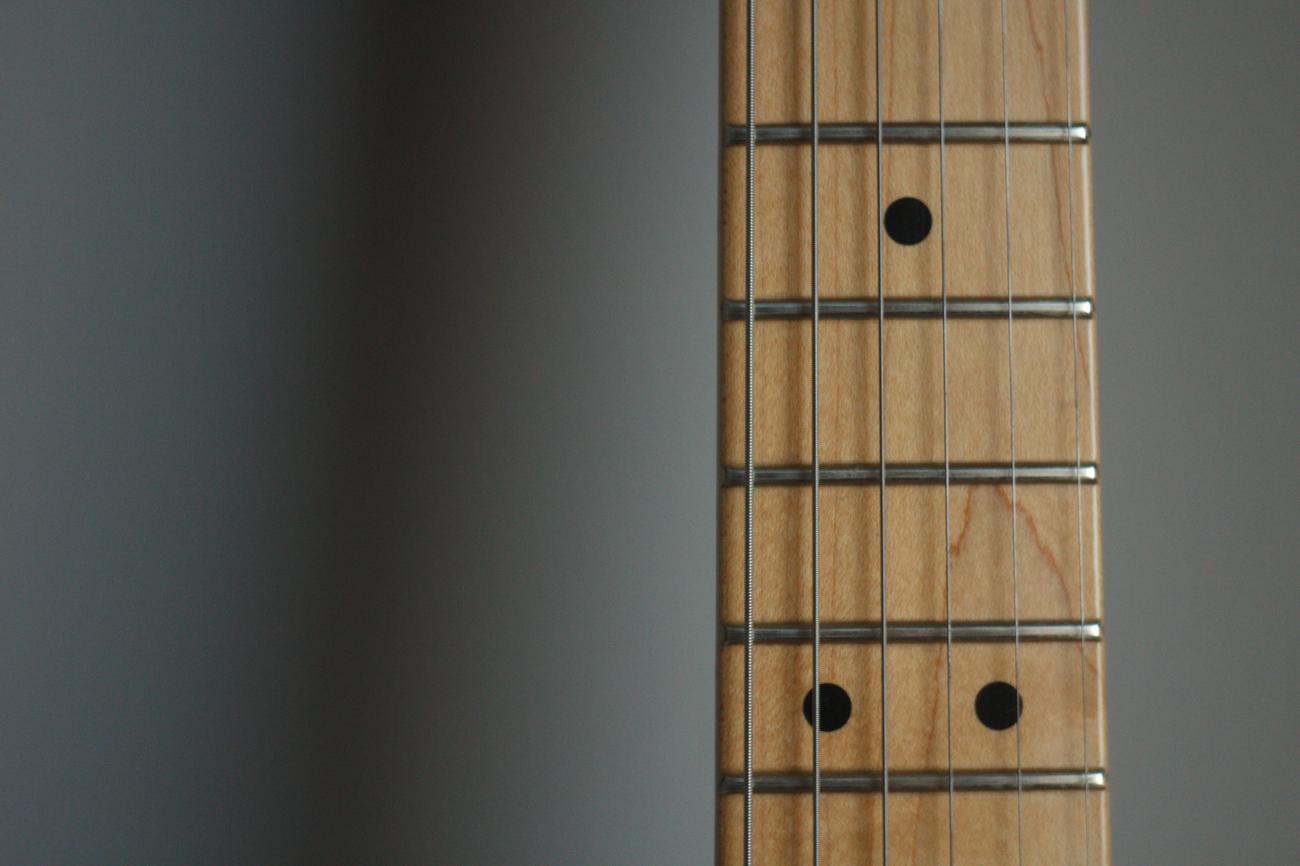Are you ready to embark on an exciting musical journey? Get ready to strum, pluck, and strum again as we dive into the wonderful world of guitars! In this article, we will explore some fascinating and fun Guitar Facts For Kids. Whether you’re a young aspiring musician or simply curious about the magical instrument, get ready to be mesmerized as we unravel the secrets of the guitar. With engaging content tailored to young minds like yours, we are here to make learning about guitars both educational and a whole lot of fun! So grab your pick and let’s get strumming!

Guitar Facts For Kids
Hey there, young music enthusiasts! Are you ready to dive into the wonderful world of guitars? Get ready to strum along as I share some fascinating Guitar Facts For Kids with you. From its origins in the Middle Ages to the diverse genres it accompanies today, the guitar is a stringed instrument that has captured the hearts of musicians and audiences alike.
A Brief History
Did you know that the word “guitar” was adopted into English from the Spanish word “guitarra” in the 1600s? But the guitar’s roots go back even further. It has been around since the Middle Ages, bringing joy to countless people throughout history. Originally played in Spain in the 14th century, the guitar evolved from an instrument called a “vihuela.”
Strings and Sounds
Now, let’s take a closer look at the guitar itself. The guitar is a fretted and plucked string instrument. What does that mean? Well, it has frets or metal wires on the fingerboard that help play the notes. You might be wondering how the guitar produces those beautiful sounds. It’s all about the vibrations of the strings! Whether it’s an acoustic guitar or an electric one, the strings vibrate and create music.
Exploring the Guitar
Think of the guitar like a puzzle with many pieces. There’s the body, neck, headstock, strings, frets, and bridge. Each part plays a special role in creating those magical melodies. Guitarists use their fingers or a pick to strum or pluck the strings and make music come alive.
Shapes and Sizes
You might have noticed that there are different types of guitars. The two main categories are acoustic and electric guitars. Acoustic guitars produce sound acoustically, which means they transmit the vibration of the strings to the air. On the other hand, electric guitars rely on electronic amplification to produce sound. They need to be plugged into an amplifier in order to be heard really loud!
Let’s Tune it Up
Did you know that guitars can have different numbers of strings? The most common type is the six-stringed guitar. But there are also guitars with four, seven, eight, ten, or twelve strings. No matter the number, they are usually tuned to E-B-G-D-A-E from the highest to the lowest string. This standard tuning helps create a balanced and harmonious sound.
Versatile Sounds
One of the coolest things about the guitar is its versatility. It’s like a chameleon, adapting to different music genres. From folk to blues, country to rock, and many more, the guitar is a key player in various popular music styles. Just think of all the famous guitarists who have left their mark on the music world!
Let’s Strum Along
Now, let’s talk about playing the guitar. Learning to play this incredible instrument can be such a rewarding experience. But remember, it takes practice and patience. As you dive into the world of guitar playing, you’ll discover different techniques and ways to create amazing sounds. Don’t be discouraged if you don’t sound like a rockstar right away. With dedication and perseverance, you’ll definitely reach your musical goals.
Time to Jam!
So, are you ready to embark on a musical journey with the guitar? Exploring the fascinating history, discovering the various types, and learning to play can open a whole new world of possibilities for you. Whether you want to strum gentle melodies on an acoustic guitar or rock out on an electric one, the guitar offers endless opportunities for musical expression. So, grab a guitar, let your fingers dance on the strings, and let the magic of music guide you!
“The guitar, a world of strings and melodies, awaits your curious fingers.”
Guitars have been captivating musicians and music enthusiasts for centuries. Whether you’re a beginner or an experienced player, exploring facts about guitars can add a whole new level of appreciation for this timeless instrument. Did you know that guitars have six strings, each tuned to a specific note? If you’re curious to dive deeper into the fascinating world of guitars, we invite you to check out our comprehensive collection of facts about guitars. Just click here to uncover an array of intriguing information about this beloved musical companion: facts about guitars. Happy strumming and exploring!
Guitar Facts For Kids
Are you ready to dive into the fascinating world of guitars? Get ready to be amazed by these fun facts about guitars that will leave you wanting to strum the strings yourself! Did you know that guitars have been around for over 5,000 years? That’s right, this incredible instrument has stood the test of time. Whether you’re a beginner or a seasoned pro, understanding the history and interesting facts about guitars will surely enhance your appreciation for this versatile instrument.
One of the most intriguing facts about guitars is their incredible variety. From classical to electric, acoustic to bass, there’s a guitar for every musical style. You’ll be amazed at the countless shapes and sizes they come in, each with their own unique sound. If you’re looking to explore the fascinating world of guitars, check out these fun facts that will surely pique your curiosity.
For starters, did you know that guitars are made from a variety of materials? From classic options like wood to modern materials such as carbon fiber, each material brings a unique tone and feel to the instrument. Imagine the possibilities and the endless combinations of sound you can create with different guitar materials!
Now, let’s talk about some amazing guitar facts that will blow your mind. Did you know that the longest guitar ever made measured a whopping 17.5 meters? That’s longer than a school bus! Just picturing someone strumming that giant guitar is mind-boggling. Another mind-blowing fact is that the world’s most expensive guitar was sold for an astonishing $2.7 million! Can you imagine owning a guitar worth millions of dollars?
If you’re still hungry for more guitar knowledge, check out these additional interesting facts about guitars. Did you know that the oldest known guitar-like instrument dates back to ancient Egypt? Or that guitars have 6 strings because ancient Greeks believed that number represented perfection? These fascinating tidbits will surely impress your friends and make you appreciate the rich history behind this iconic instrument.
So what are you waiting for? Click on these links to explore more fun facts about guitars:
– fun facts about guitars
– interesting facts about guitars
– amazing guitar facts
Guitars are so much more than just musical instruments. They represent creativity, passion, and a means of expression. Whether you’re a guitar enthusiast or simply intrigued by this incredible instrument, these links will take you on a journey of discovery, where you’ll uncover even more captivating guitar facts. Get ready to be inspired and amazed by the wonderful world of guitars!
Who Invented the Guitar?
[youtube v=”fWOHYYhxFW8″]
Summary
The guitar, a beloved musical instrument, has a rich history that dates back to the Middle Ages. Its roots can be traced to the vihuela, an instrument that eventually evolved into what we now know as the guitar. The word “guitar” was adopted from the Spanish word “guitarra” in the 1600s, and it has since become a staple in music across the globe.
Evolution from the Vihuela
The guitar’s journey begins with the vihuela, which was popular during the Middle Ages. Over time, the vihuela underwent transformations, leading to the creation of the guitar. With its unique structure and design, the guitar quickly gained popularity and became a fundamental instrument in various musical genres.
Anatomy of a Guitar
To understand the guitar’s magic, we must explore its components. A guitar consists of a body, neck, headstock, strings, frets, and bridge. The body of the guitar amplifies the sound produced by the strings through its hollow structure. The neck holds the fretboard, where the player places their fingers to produce different notes. The headstock is at the top of the neck and holds the tuning pegs, which allow the player to adjust the pitch of the strings.
Fretted and Plucked
The guitar is a fretted and plucked string instrument. It features frets on the fingerboard, which enable the player to press down on the strings to produce specific notes. Plucking the strings with the fingers or a pick sets the guitar’s vibrant, melodic tones into motion. It’s the vibrations of these strings that create the beautiful sounds that captivate our ears.
“The guitar’s vibrating strings produce the mesmerizing sounds we all love and appreciate.”
Acoustic vs. Electric Guitars
There are two primary types of guitars: acoustic and electric. Acoustic guitars produce sound acoustically, without the need for external amplification. They are versatile and suitable for various musical styles. On the other hand, electric guitars require amplification through connection to an amplifier. This allows for greater volume control and the ability to experiment with different effects and tones.
Versatility and Creativity
The guitar’s versatility is one of its most captivating features. It can be found in a wide range of music genres, from classical to rock, pop to country, and everything in between. Learning to play the guitar opens up a world of musical possibilities, allowing individuals to express their creativity and emotions through the instrument’s melodic language.
A Journey of Practice and Dedication
Mastering the guitar is no easy feat. It requires dedication, practice, and patience. Beginners must learn proper finger placement, chords, scales, and other techniques. With time, perseverance, and guidance, anyone can acquire the skills to play this beautiful instrument.
“Learning to play the guitar takes dedication, practice, and a passion for music.”
The Guitar’s Endless Possibilities
Playing the guitar transcends the boundaries of language and connects people through the universal language of music. Whether it’s strumming chords around a campfire, performing on stage, or simply playing for personal enjoyment, the guitar grants individuals the opportunity to express themselves and create soul-stirring melodies.
“The guitar possesses the power to evoke emotions, inspire, and create moments of pure musical bliss.”
In conclusion, the guitar’s invention holds a significant place in the world of music. Its evolution from the vihuela to the instrument we know today showcases the creativity and ingenuity of musicians throughout history. With its versatile nature, wide array of genres, and the untapped potential in the hands of skilled players, the guitar continues to enchant audiences worldwide, making it an irreplaceable part of our musical heritage.
“The guitar’s rich history, versatile nature, and ability to evoke emotions make it an iconic instrument cherished by musicians and music lovers alike.”
FAQ
Question 1
What is the history of the guitar?
Answer 1
The guitar has been around since the Middle Ages and was first played in Spain in the 14th century. It developed from an instrument called a “vihuela” and the word “guitar” was adopted into English from the Spanish word “guitarra” in the 1600s.
Question 2
How does a guitar produce sound?
Answer 2
The guitar is a stringed instrument that makes music from the vibrations of strings. Acoustic guitars produce sound acoustically by transmitting the vibration of the strings to the air. On the other hand, electric guitars rely on electronic amplification to produce sound.
Question 3
What are the different types of guitars?
Answer 3
There are different types of guitars, including classical, acoustic, and electric guitars. The classical guitar is commonly used in classical music, while acoustic guitars are versatile and commonly used in folk, blues, country, rock, and other popular music genres. Electric guitars are typically used in rock, pop, and jazz music.
Question 4
How are the strings of a guitar tuned?
Answer 4
The strings of a guitar are typically tuned to EBGDAE from highest to lowest. Each letter represents the name of the string when it is played open.
Question 5
Why is learning to play the guitar a rewarding experience for kids?
Answer 5
Learning to play the guitar can be a rewarding experience for kids because it fosters their passion for music and provides a creative outlet. It also helps in developing discipline, patience, and coordination.
- Georgia Platform: A Southern Strategy, 1850s - March 31, 2025
- How many weeks is 40 days: Quick Conversion Guide for Accurate Results - March 31, 2025
- How many feet is 300 meters? 984 Feet: Understand Length Conversions Easily - March 31, 2025
















